How to Connect VCR to TV
Use coaxial cable
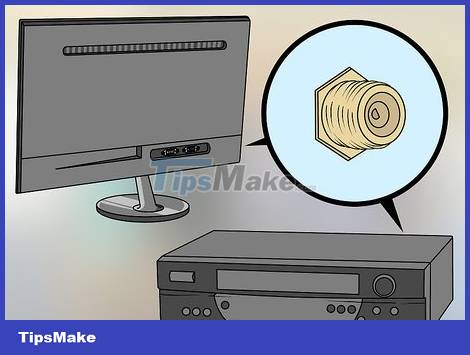 How to Connect VCR to TV Picture 1
How to Connect VCR to TV Picture 1
Look for the coaxial cable port on both the TV and the VHS player. The coaxial cable port has a round metal cylinder with a small hole in the middle, however if your TV is old it may have a small round hole at the back.
Both the TV and VHS player must have a coaxial cable port to apply this method.
If your TV or VCR doesn't have a coaxial port, you can still use an AV cable to connect to the video player.
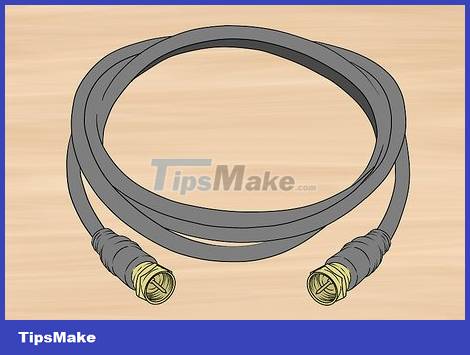 How to Connect VCR to TV Picture 2
How to Connect VCR to TV Picture 2
You need to make sure you have coaxial cable. Coaxial cables have similar connectors—a hollow metal cylinder in the middle with a plug—and often have collars on each end to secure the plug to the connection port.
If you don't have a coaxial cable, you can buy one online or at an electronics store.
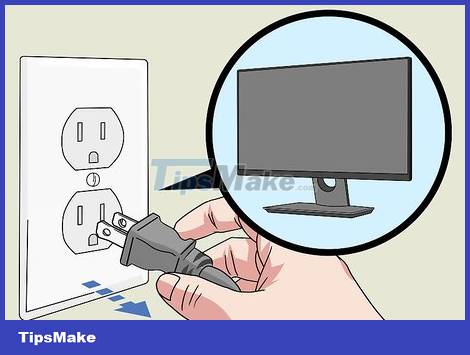 How to Connect VCR to TV Picture 3
How to Connect VCR to TV Picture 3
Turn off the TV and unplug it. This is to limit the risk of affecting the TV or yourself when connecting a VHS player.
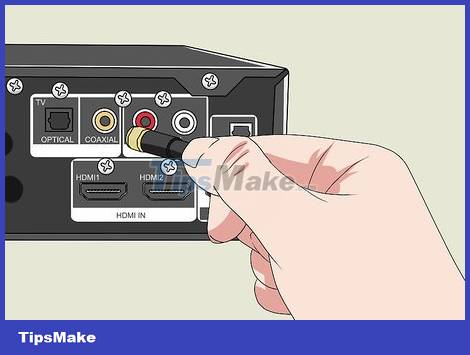 How to Connect VCR to TV Picture 4
How to Connect VCR to TV Picture 4
Plug one end of the coaxial cable into the coaxial cable port on the back of the VHS tape player.
You can tighten the connection strap so that the cable end fits more tightly into the VHS tape head.
Below the coaxial cable port on a VHS tape player is usually something like "TO TV".
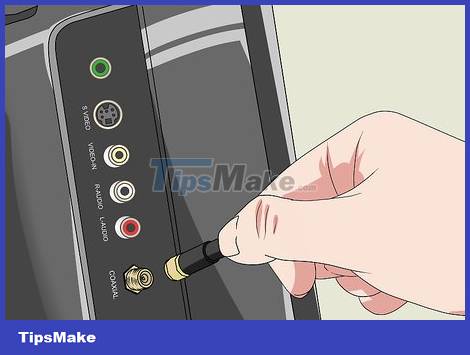 How to Connect VCR to TV Picture 5
How to Connect VCR to TV Picture 5
Plug the other end of the coaxial cable into the TV. Likewise, the cable end must be plugged directly into the back of the TV.
You must tighten the cable end if necessary.
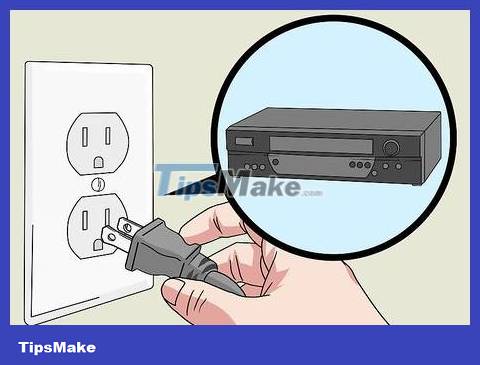 How to Connect VCR to TV Picture 6
How to Connect VCR to TV Picture 6
Connect the VCR to the power source. Plug the video player's power cord into a power source (wall outlet or electrical outlet).
If the video player's power cable is removable, you need to attach the power cable to the device's power port first.
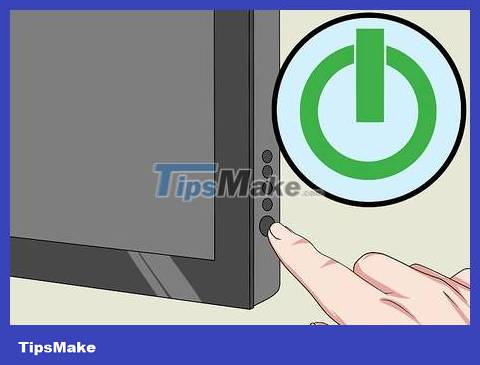 How to Connect VCR to TV Picture 7
How to Connect VCR to TV Picture 7
Plug in the power and turn on the TV. The video player will probably turn on at the same time; In this case, skip the next step.
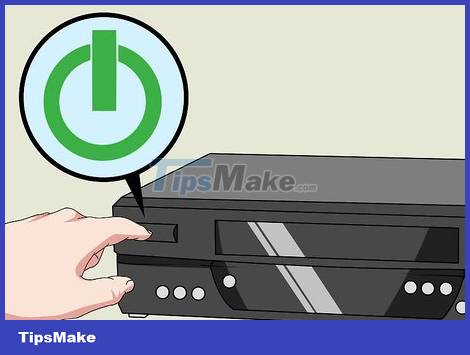 How to Connect VCR to TV Picture 8
How to Connect VCR to TV Picture 8
Turn on the VCR. Click the "Power" button located at the top of the video.
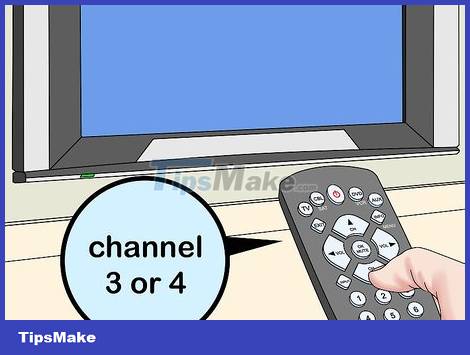 How to Connect VCR to TV Picture 9
How to Connect VCR to TV Picture 9
Switch the TV to channel 3 or 4. Press the "Channel +" or "Channel -" button on the TV or its remote control to switch to channel 3 or 4. The channel used may vary depending on the TV; Once the VCR's blue screen appears, you can continue.
With some VCRs, you need to set up channels on the VCR itself first before you can play the tape.
If you want to play a VHS tape with your VCR, just insert the tape and press "Play" to start watching.
Use AV cable
 How to Connect VCR to TV Picture 10
How to Connect VCR to TV Picture 10
You need to make sure you have an AV cable. AV cables come in red, white, and yellow colors and are often used to connect older devices to TVs.
White and red cables are for audio.
Yellow cable for images.
If you don't have an AV cable, you can buy one online or go to an electronics store. AV cables are relatively cheap.
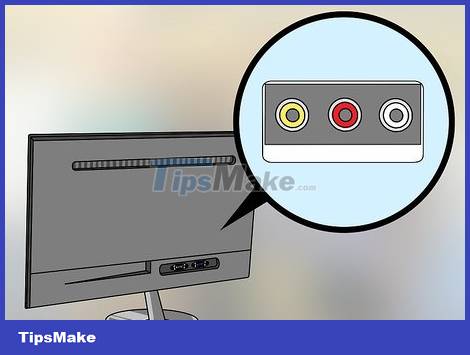 How to Connect VCR to TV Picture 11
How to Connect VCR to TV Picture 11
Check the AV input on the TV. The red, white, and yellow ports are usually located on the back of the TV, but on some older TVs, these ports are located in the front frame of the TV.
If you find the red and white inputs but don't see the yellow port, look for the green port that says "Video." If your TV has one of these ports, you can still use an AV cable.
If your TV doesn't have an AV input, you'll need to purchase an RCA-to-HDMI adapter ( not the HDMI-to-RCA type) and an HDMI cable.
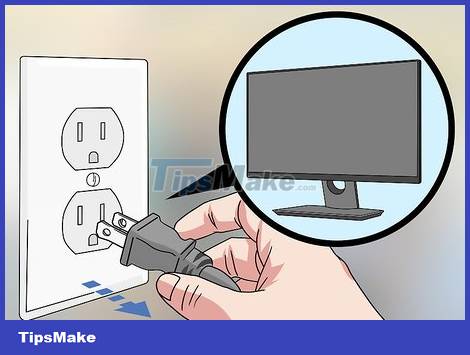 How to Connect VCR to TV Picture 12
How to Connect VCR to TV Picture 12
Turn off the TV and unplug it. This is to limit the risk of affecting the TV or yourself when connecting a VHS player.
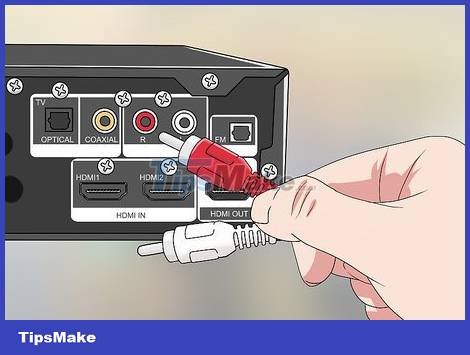 How to Connect VCR to TV Picture 13
How to Connect VCR to TV Picture 13
Plug the AV cable into the VCR. Plug the white cable into the white port, the red cable into the red port, and the yellow cable into the yellow port located on the back of the video player.
Some VCRs only support mono sound, meaning the back of the player only has a white and red port. Just connect normally and leave the cable end unsupported.
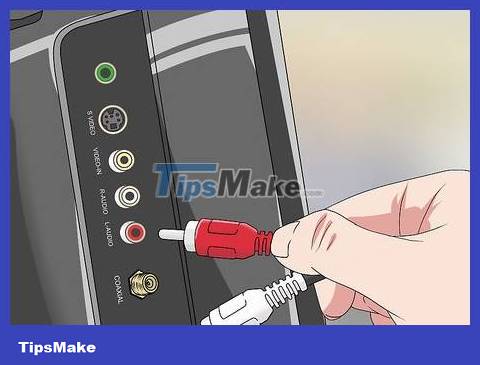 How to Connect VCR to TV Picture 14
How to Connect VCR to TV Picture 14
Plug the other end of the AV cable into the TV. Find the red, white, and yellow input port cluster, then plug the cable into the corresponding port.
You need to make sure that all cable ends are in the same input area, row or column. Inlet areas are usually numbered.
If you are using an RCA-to-HDMI converter, proceed as follows: plug the AV cable into the colored port on the converter, the other end into the HDMI port on the RCA converter, the other end into the HDMI port of the TV and plug the adapter power cable into a power source (such as a wall outlet).
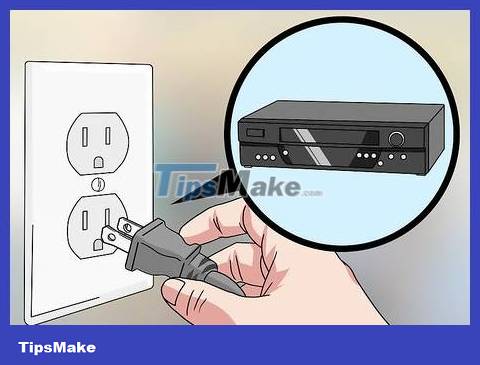 How to Connect VCR to TV Picture 15
How to Connect VCR to TV Picture 15
Connect the VCR to the power source. Plug the video player's power cord into a power source (wall outlet or electrical outlet).
If the video player's power cable is removable, you need to plug the power cable into the device's power port first.
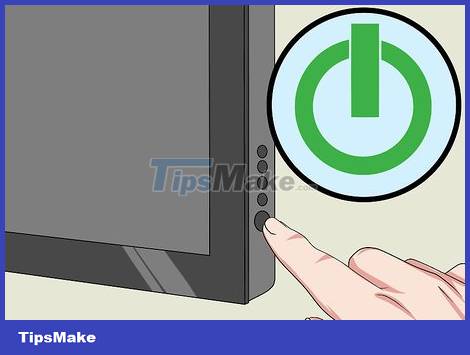 How to Connect VCR to TV Picture 16
How to Connect VCR to TV Picture 16
Plug in the power and turn on the TV. The video player will probably turn on at the same time; In this case, skip the next step.
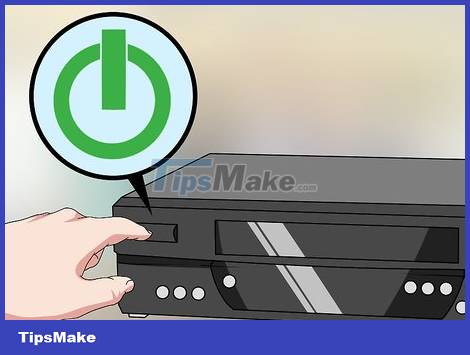 How to Connect VCR to TV Picture 17
How to Connect VCR to TV Picture 17
Turn on the VCR. Click the "Power" button located at the top of the video.
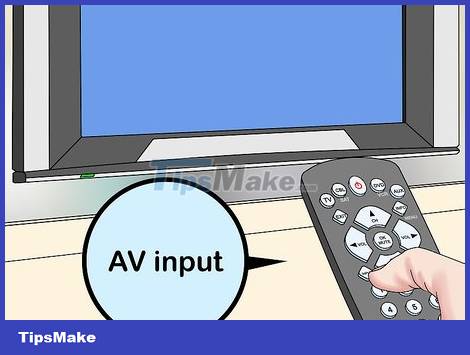 How to Connect VCR to TV Picture 18
How to Connect VCR to TV Picture 18
Switch the TV input if necessary. If the TV is not set up to use the AV input, press the TV's "Input" or "Source" button until you reach the "AV" setup screen. You can now use your video player.
If you want to play a VHS tape with your VCR, simply insert the tape and press "Play" to start watching.
You should read it
- KDE Connect - Download the latest KDE Connect here
- How to Connect iPhone to Linux PC Using KDE Connect
- How to connect to the network for Android TV box
- How to connect laptop to TV? 5 ways to connect the TV to laptop
- 5 simple ways to connect microphone to PC
- KDE Connect is officially available on iPhone
- How to install Miracast Connect app on Windows 10
- How to use KDE Connect with MATE on Ubuntu and Debian
- How to set up Spotify Connect on Raspberry Pi
- Are there ways to connect your phone to a TV to watch videos?
- How to connect laptop to TV via HDMI port
- 3 ways to connect MacBook to TV


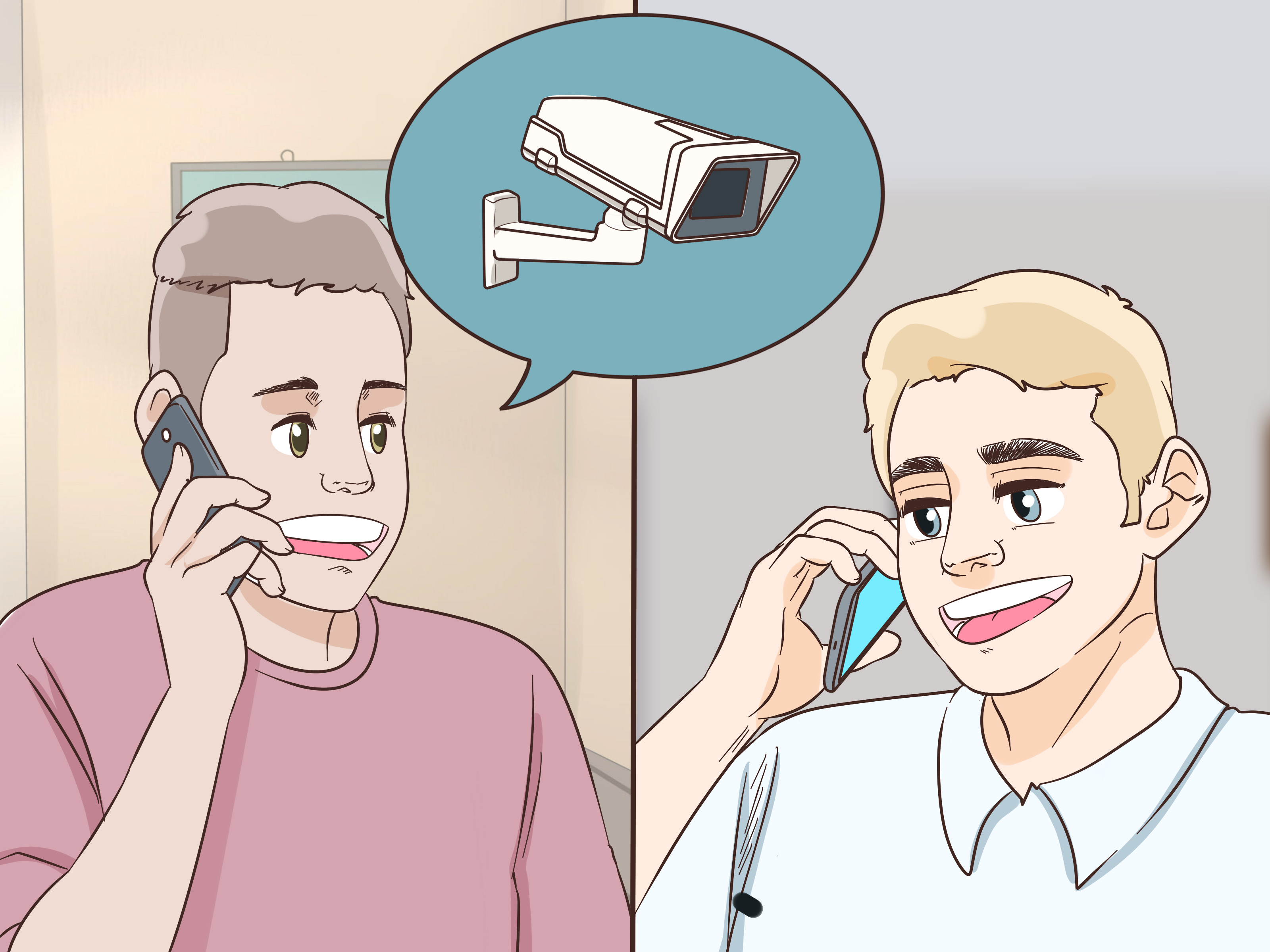



 KDE Connect - Download the latest KDE Connect here
KDE Connect - Download the latest KDE Connect here How to Connect iPhone to Linux PC Using KDE Connect
How to Connect iPhone to Linux PC Using KDE Connect How to connect to the network for Android TV box
How to connect to the network for Android TV box How to connect laptop to TV? 5 ways to connect the TV to laptop
How to connect laptop to TV? 5 ways to connect the TV to laptop 5 simple ways to connect microphone to PC
5 simple ways to connect microphone to PC KDE Connect is officially available on iPhone
KDE Connect is officially available on iPhone